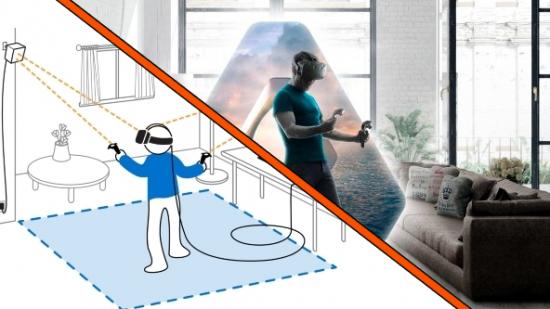Deshitify (verb). An industry term for removing the last vestiges of fecal matter from something previously shot through with shit like Brighton through rock. It’s something AMD have been doing recently with their driver software and something which desperately needs to happen with virtual reality.
Spoiler alert – one technology that needs updating is GPU tech. But here’s our pick of the best graphics cards around today for your normal PC gaming needs.
However much virtual reality has advanced since the days of The Lawnmower Man, Virtuality and Cyberzone it’s still pretty rubbish. It’s rubbish because you still have to stick your eyeballs into heavy, oversized, plastic scuba masks, you still have to strain your brain dealing with the low-res 3D world spat out by your super-expensive gaming rig and you still have to be chained to said machine with wires the size of a transatlantic telegraph cable.
Sure, if you’ve spent the best part of a grand on a headset and a couple of Wiimote-y controllers you’ll probably defend VR to the hilt, claiming wondrous, immersive experiences that reach right into the core of your being and remind you why you’re a gamer at heart. Or some such horseshit.
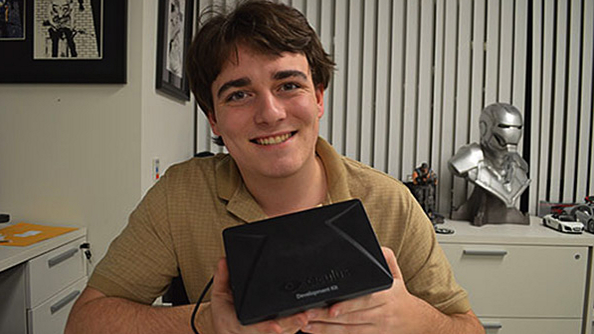
But you’re wrong, virtual reality still stinks. VR is on its way, but it most certainly isn’t the finished article yet. It’s only just made it to its awkward, gawky teenage adolescent stage. It’ll occasionally do something that makes you think it’s almost a functioning, grown-up member of society before lapsing back into faux-depressive, angsty flailing for relevance once more.
VR has got a lot of growing up to do. After all, how many of us looking back would claim the teenage versions of ourselves were where we’d totally nailed our potential? I’ll wager very few, and those that do were probably super popular with high-school idiots, lost their virginity at fourteen and fell into dead-end jobs that make them want to asphyxi-wank themselves to a lonely death every night.
For virtual reality to become the immersive Ready, Player One world that fills me with as much dread as excitement there are some very important technological steps – some would say leaps – that need to happen before then.
Ditch the tethered tech dreadlocks
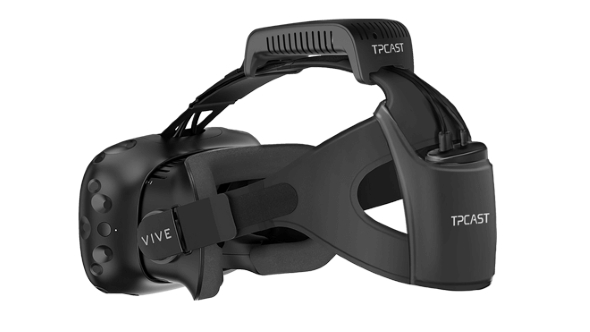
This is the single most important thing that needs to happen for VR to really kick on, it absolutely has to be free of wires, free of the thick tech dreads which keep you tethered to your PC. And I’m not talking about wearing a bulky battery-powered PC on your back. Not only that, it needs to be wireless and still capable of operating with the exact same reliability, speed and latency that it currently has when plugged in. If not, better.
There’s is some movement on that front. Quark VR released a statement at the end of August claiming to be working with Valve to create a wireless Vive prototype for testing this year.
“Getting the experience to feel seamless through Wi-Fi, keeping in mind the inevitable connection delay, was a huge challenge,” Quark VR said in their press release. “But we’re getting extremely close to being able to show it in action!”
Quark VR’s solution is a little gadget which plugs into the headset and wirelessly connects to your PC via WiFi. But it’s not the only one – TPCast have also created an adapter for the Vive, and they’ve already started selling theirs.
Well, they’ve sold their (probably pretty minimal) Chinese pre-order allocation anyways, for $220 (£180) a pop. Quark VR have said nothing more than they are using WiFi, but TPCast have claimed to deliver an extra latency of no more than 2ms while still being able to keep the 90fps at 2K gaming going strong. My fear here is the purported use of the 60GHz wireless tech. It’s capable of speeds around seven times greater than a standard 802.11ac router, but it’s also a short-throw connection you could probably disrupt with a wave of the hand.
There is though the promise of terahertz transmitters that researchers from Hiroshima University, Panasonic and the National Institute of Informations and Communications Technology of Japan have been working on.
“Today, we usually talk about wireless data-rates in megabits per second or gigabits per second. But I foresee we’ll soon be talking about terabits per second. That’s what THz wireless technology offers,” said Professor Minoru Fujishima, Department of Semiconductor Electronics and Integration Science at Hiroshima University. “Such extreme speeds are currently confined in optical fibres. I want to bring fibre optic speeds out into the air, and we have taken an important step towards that goal”.
Using the 275-305GHz frequency range they’re able to transmit at 10Gbps per channel, over multiple channels within that range. If they could get some range and reliability to that it could be a winner. But that’s still a big if as the researchers haven’t published the distances involved.
We’ll see the first fruits of wireless VR next year, with the Vive prototypes and Intel’s Project Alloy-based headsets potentially hitting the market in 2017. But I wouldn’t expect to see a reliable, speedy wireless setup for virtual reality for a good couple years at least.
Somewhere for all the juice to live

Hand in virtual reality glove with wireless tech has to be an improvement in battery technology. To power the wireless technology as well as the sensors and screens of an updated, high-end virtual reality headset you’re going to need some pretty beefy batteries.
TPCast, they of the promised Vive wireless gadget, are planning to offer different capacity battery packs for the add-on device which will offer between two and five hours of VR gaming. For a continuous session, that’s plenty. Right now a five hour VR sesh will leave you slightly disconnected from the real world upon re-entry and mildly deranged.
But how long will it take to charge back up to full capacity? Unless you’ve got a spare power pack you’re reliant on having remembered to put it on charge after your last wireless playtime as well as being utterly reliant on said battery being able to comfortably hold onto its charge over time too.
There are new battery technologies on the horizon though, potentially as soon as next year. Ex-MIT alumni, SolidEnergy Systems, are expected to bring their lithium-metal batteries to wearables and phones in the first half of 2017. The lithium-metal approach involves using a thin high energy-density metal foil which is able to produce the same amount of power in half the size, or twice the capacity at the same size.
Further into the future are lithium-air and solid state lithium-ion batteries. The lithium-ion ‘breathing’ batteries use oxygen as an oxidiser instead of a physical material oxidiser and researchers at Dallas University believe it could result in batteries that are a fifth of the price of existing lithium-ion, a fifth lighter and with capacities that could make devices last five times longer. Well, isn’t lithium-air a mathematical oddity, a factor of five away from everything.
Solid state lithium-ion tech uses sulfide superionic conductors (definitely not made up Star Trek science, honest) which is supposed to deliver batteries capable of operating at super capacitor levels, meaning they can charge to full capacity in less than ten minutes. It’s also meant to be more stable, and thus safer, than existing technology. Samsung, pay attention.
I call forth the power of ten Titans
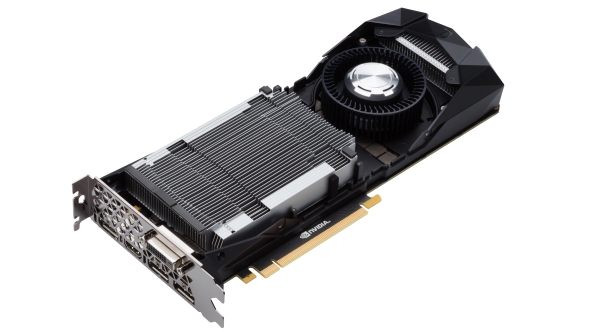
One of the most important facets to virtual reality is the feeling of immersion and to really nail that you need a really solid feeling of presence. And to do that you need incredibly powerful graphics hardware.
I’m not just talking about the need for the imagery to be beautifully realised or photorealistic, it primarily needs to be responsive and consistent. There’s little more immersion-breaking in a VR experience than the visuals not responding immediately to your movements or the frame rate suddenly halving.
At the moment the resolution for even the high-end Vive and Oculus Rift headsets is pretty minimal compared to what we’re used to on the desktop. And even then they need top-spec graphics cards to be able to deliver the requisite frame rates needed to stop users vomiting up their breakfast every time they move their heads.
This is at least something we can definitely count on happening on a relatively regular cadence. Both Nvidia and AMD are releasing new graphics architectures in the next twelve months, with the upcoming Volta and Vega architectures respectively. And these could be the first generations of GPU that were designed at a time when the current range of VR headsets were first being shouted about.
Vega will appear sooner, in the first half of next year, with Nvidia’s Volta tech possibly only appearing in professional guise in 2017. We will though get a GTX 1080 Ti based on the latest Titan X’s GPU, which will bring serious GPU power down into a little bit of a more reasonable price point. By reasonable we mean you’ll only have to sell off the one kidney.
More pixels and make ’em snappy
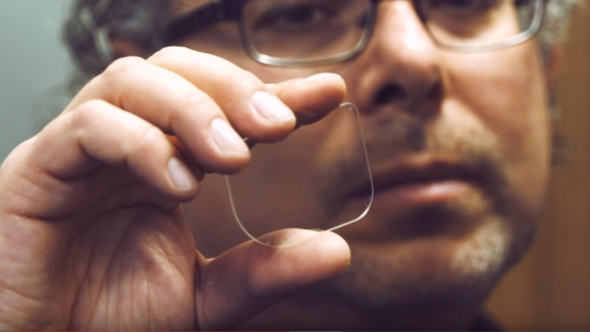
At the moment both the Oculus Rift and HTC Vive use twin displays, each with a resolution of 1080 x 1200. Compared with the development versions of the two high-end headsets the increased resolution has done a lot to minimise the screen door effect of having the panels essentially mounted onto your eyeballs.
But minimise is not eradicate. If you wanted to hit the point where you can no longer see the individual pixels even a 4K screen isn’t enough, you need to be hitting 8K. Per eye. That’s over 66 million pixels and that’s going to take a huge amount of graphics horsepower, way more than the next generation, or two, of Nvidia and AMD graphics cards could cope with.
But even at 8K per eye you’re still going to be able to see the effects of a pixelised screen. You’ll still see the aliasing going on, you’ll still see the crawlies on the edges of what are meant to be clean lines.
Mystical startup Magic Leap are using a ‘photonics chip’ (looks like a lens to my weak eyes), a “three-dimensional wafer-like component that has very small structures in it…and they manage the flow of photons that ultimately create a digital light field signal,” explains Rony Abovitz, founder of Magic Leap.
They’re creating a mixed reality device which uses a light field to fool your eyes and your brain into believing what they’re seeing is really there and part of the world around you. Magic Leap is still shrouded in secrecy with just a handful of first hand accounts and some dubious demo footage out there.
But light fields look like the best bet for creating an image in either mixed reality, or straight virtual reality, that feels comfortable, natural and of a high quality. Flat, 2D screens use techniques that trick your eyes into perceiving depth in an image, but because they’re tricks they can still end up confusing the brain, giving you headaches and nausea.
Stanford researchers have created a light field display uses different layers allowing the eyes to do the refocusing themselves, creating a more natural, comfortable image. I’ve played with previous attempts at light field displays(pdf) and they’ve been clunky and generally with pretty low image quality. The Stanford Light Field Stereoscope, shown off at last year’s SIGGRAPH event, creates a much higher resolution image using a pair of semi-transparent screens placed one in front of the other.
This doesn’t quite sound like what Magic Leap have got planned for their device – whenever they get around to creating even a workable prototype for developers to play with – but shows that more advanced screen technology for near-eye displays are possible and being developed right now.
It is possible that what Magic Leap are doing is creating a form of Virtual Retina Display, a technology which essentially works by painting the image directly on the retina inside your eyeball. Sounds scary, but that could get around field of view and resolution/screen door effect issues.
Round round, get around, how do I get around?
Virtual reality has moved on pretty quickly from those initial motionless Oculus Rift demos. They introduced head tracking to the DK2 headset to translate lateral movement and HTC’s Vive rapidly brought room-scale VR to the table. Now Microsoft are talking about world scale mixed reality with their Project Evo compatible headset designs.
As I’ve mentioned, wireless technology is integral to the freedom of movement necessary for room scale or world scale immersion, but how you actually move around within the physical area is just as important. You are always going to be limited in the space you have to move around in, and it will likely be a smaller area than the game world you’re inhabiting, so there need to be more creative ways around the current teleportation standard.
At the moment most VR games operate with a mix of physically wandering around a small area and a Dishonored-style Blink teleport to shift around the game world. There is a technique called redirected walking though which could allow a finite space to seem like an infinite plane. It was introduced to the VR space with the Void system, a virtual reality experience which is able to TARDIS your play space using the redirected walking trick.
It’s able to create an infinite space by slightly adjusting the virtual world around you to make you subconsciously alter your movement. The idea of the infinite hallway works by shifting the virtual corridor around to make you imperceptibly start walking around in a circle rather than a straight line. It still needs a pretty big area to create the illusion of infinity though – in order for someone to think they’re going in a straight line the circle needs to be around 22-23m in radius.
So yeah, probably still not really workable in your lounge, unless you’re rocking that warehouse vibe at home.
Oh, and games too.
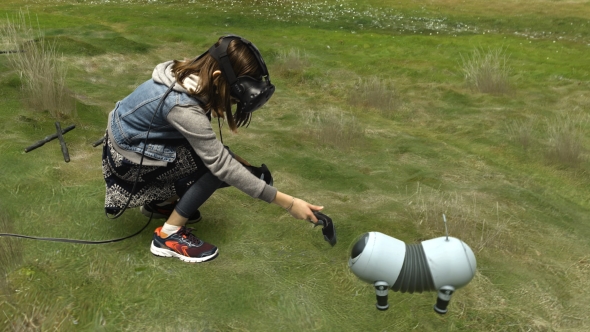
But that’s just the techie stuff. What about the software? We’re still waiting for real VR gaming to take off – at the moment it’s still pretty much just short-lived ‘experiences’ or standard flat-screen games shoehorned into a VR reboot.
So while there are most definitely technological issues that need to be ironed out before virtual reality can blossom there’s a whole lot of work that needs to go in game development to make it a worthwhile platform for gaming.
Without that initial investment in the software to make all that new hardware sing, VR will fail miserably. But that’s a whole other story…
